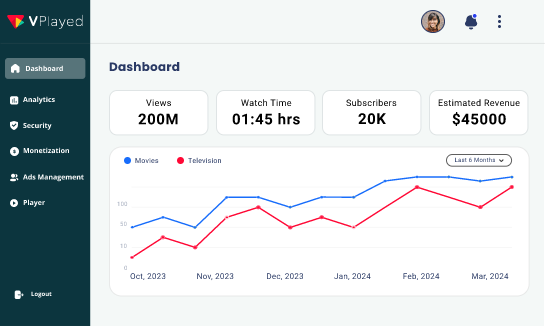Start and Grow Your Online Video Streaming Platform With 1000+ Features & 10+ Revenue Models.
Book a Free DemoVideo Streaming Server: What it is, How to create one, Features and Benefits
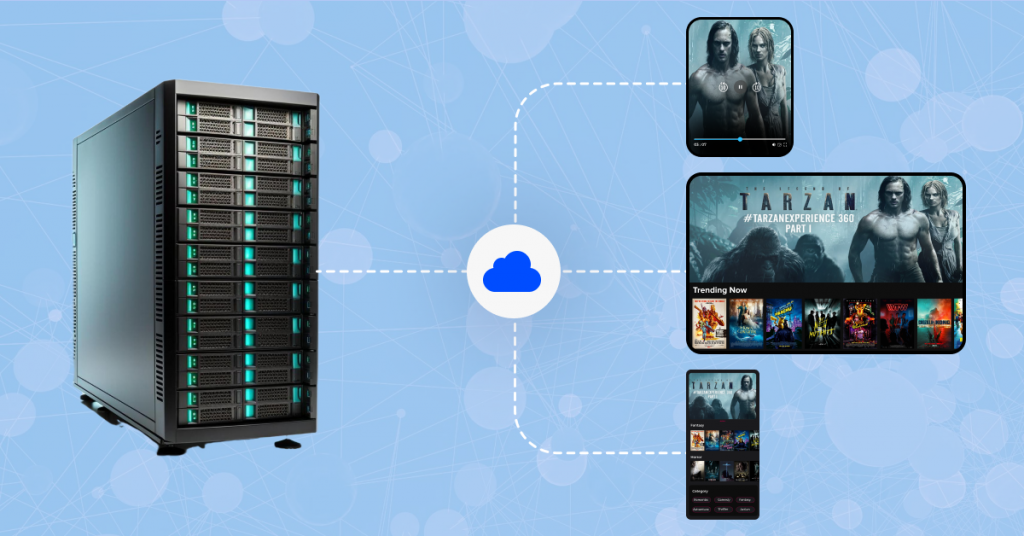
Summarize this article via
If your entire video streaming business depends on third-party platforms, you are basically running a marathon on someone else’s track. One policy update, one algorithm shift, one random restriction…and boom, your reach, revenue, and user experience can change overnight.
A video streaming server solves this at the root. It gives you 100% control over how your videos are stored, processed, delivered, secured, and monetized.
Here are some of the stats:
- Over 82% of global internet traffic is already video.
- The video streaming server market is growing at 15%+ CAGR and is expected to cross $15 billion by 2030.
- And platforms that use their own streaming infrastructure see a 25-40% improvement in latency, reliability, and playback stability compared to relying on shared hosting/CDNs.
In this guide, we are breaking it all down: what a video streaming server actually does, how to set one up and how platforms like VPlayed make your life easier.
But before we get into the how, let’s get clear on what exactly a video streaming server is, because a strong start begins with a solid foundation.
- Fully Customizable
- Lifetime Ownership
- On-Premise/On-Cloud
- 100% White-label
- Zero Revenue Share
- Hire Developers
Table of Contents
What is a Video Streaming Server?
A video streaming server is a type of web server designed to deliver video content, live streams and on-demand videos to anyone, anywhere, at any time.
Unlike a traditional web server that just hosts files, a video streaming server handles the continuous flow of video data in real-time.

It does all the complex tasks like encoding video into multiple formats, adaptive bitrate streaming (which adjusts video quality based on the viewer’s internet speed), secure delivery using encryption and digital rights management (DRM).
This means users get the best possible viewing experience no matter what device, network, location or time of day.
How to Build a Video Streaming Server – A Step-by-Step Guide
With video streaming making up over 80% of internet traffic today, setting up your own video streaming server gives you full control over how your content is hosted, distributed and monetized. Let us go through every step of building a video streaming server from scratch.
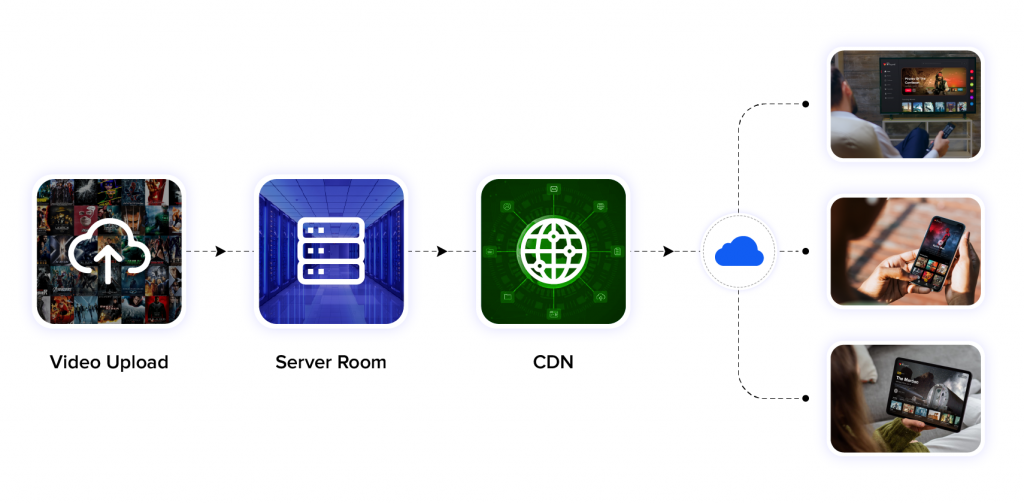
Step 1: Set Up Your Server Environment
A solid streaming experience starts with a strong backend. The first thing you need is a high-performance server. Either, go with:
- A dedicated physical server hosted on-premise, or
- A cloud-based server using AWS EC2, DigitalOcean Droplets, Google Cloud, or Linode.
For most custom deployments, Linux (preferably Ubuntu) is the way to go due to its flexibility, performance and extensive community support.
Once your server is up, install Nginx (a lightweight web server) with the RTMP module, which will allow your server to accept live video streams using the Real-Time Messaging Protocol.
Then, compile Nginx with the RTMP module. This setup gives you a server capable of ingesting live streams.
Step 2: Install Video Streaming Software
Your streaming software acts as the bridge between your camera or media source and your server. OBS Studio (Open Broadcaster Software) is one of the most widely used options.
- Available on Windows, macOS, and Linux.
- Completely free and open-source.
Once installed, configure OBS to broadcast using your server’s RTMP address (e.g., rtmp://yourserver.com/live) and a stream key. This links your local broadcasting setup to your backend server, enabling real-time transmission.
If you are building a more advanced system, you can also explore other tools like XSplit, Wirecast, or vMix depending on your use case.
Step 3: Enable Transcoding and Adaptive Bitrate Streaming
Streaming high-quality video to a global audience demands more than one bitrate. Transcoding allows your video to be converted into multiple resolutions (1080p, 720p, 480p), making it device- and bandwidth-friendly.
Use FFmpeg, a powerful open-source tool that can:
- Create adaptive bitrate streams using HLS (HTTP Live Streaming).
- Convert live or recorded video into multiple formats.
Step 4: Configure a Content Delivery Network (CDN)
Without a CDN, your server might collapse under the weight of simultaneous requests. CDNs distribute your content across global edge locations, thereby reducing latency and buffering.
You have two options:
- Use a commercial CDN like Cloudflare, Akamai, or Fastly.
- Set up a custom CDN with multiple edge nodes and geo-routing (advanced).
A good CDN reduces bandwidth consumption on your origin server, optimizes video loading speed, and guarantees a reliable viewing experience globally.
Step 5: Integrate a Media Player with Protocol Support
You need a media player that fetches your content and delivers it to end-users without glitches. Your player should support HLS (for iOS and modern browsers) and optionally MPEG-DASH (for broader device coverage).
Recommended options:
- Video.js – Open-source, customizable, and easy to embed.
- Shaka Player – Google-backed, supports DRM and adaptive streaming.
- VPlayed’s media player – Commercial, white-label streaming, and includes built-in analytics.
For smooth integration, your player should support captions, adaptive streaming, and event tracking. Embedding is as simple as using an HTML5 <video> tag or JavaScript library snippet.
Step 6: Secure Your Streams and Optimize Performance
This is where many DIY streaming setups fall short. Without security and uptime measures, your video streaming server becomes an easy target for piracy and performance failures.
Secure your streaming server with:
- HTTPS (SSL certificates) for encrypted content delivery.
- Token-based authentication to prevent unauthorized access.
- Geo-blocking and domain whitelisting to limit playback.
- DRM solutions (e.g., Widevine, FairPlay) for premium content.
Performance-wise, implement:
- Backup power and failover servers to avoid outages.
- Server-side monitoring tools (like Prometheus or Grafana).
- Real-time alerting systems for traffic spikes or downtime.
Looking To Build Your Own Video Streaming Server
Start and Grow Your Video Streaming Service With 1000+ Features & 10+ Revenue Models.
Highly Customizable
Life Time Ownership
Own 100% of Your Revenue
Full-Branding Freedom
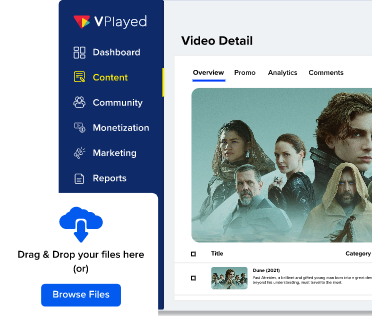
Key Features of a Video Streaming Server
Before you build a video streaming server, you should know what makes it a worth investment in 2026. Below are the must-haves for a video streaming server:
1. Scalability:
Your video streaming server must be able to grow with your audience. Whether you have 1,000 active users or a million, the server should scale without any performance degradation.
Auto-scaling cloud streaming environments, containerization with Kubernetes, and horizontal load balancing are key to handling large spikes in viewership, especially during live events. A scalable server architecture means zero downtime even under extreme traffic.
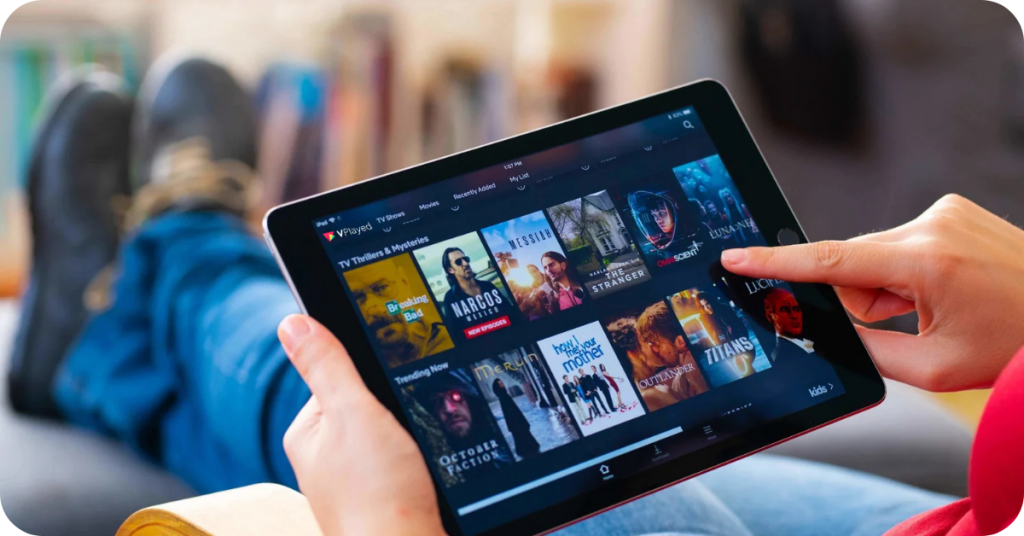
2. High-Quality Video and Audio
A video streaming server must support high resolution video formats like 4K UHD, Full HD, HDR and advanced audio codecs like AAC, Dolby Digital or Opus. These are non-negotiable if you want your viewers to have a cinema like experience from any device.
Support for modern video compression like H.264, H.265 (HEVC) or even AV1 means efficient bandwidth usage without sacrificing visual quality.
3. Adaptive Streaming:
When it comes to content delivery, adaptive bitrate streaming is a must-have. CDN adjusts video quality based on a user’s network conditions and device capabilities.
This means your viewers get buffer free playback whether they are on Wi-Fi, 5G or a flaky 4G signal. To do adaptive streaming right, your video streaming server must support HLS, DASH or CMAF packaging.
4. Built-in Video Transcoding:
Video transcoding ensures compatibility with a wide variety of devices and platforms by converting video into multiple resolutions and formats. This is especially necessary when your content library includes legacy formats or high-resolution master files.
Your video streaming server should offer automatic transcoding pipelines; ideally GPU-accelerated to convert raw video into 1080p, 720p, 480p, and more.
5. High-End Security
A secure media streaming server must include DRM (like Widevine, FairPlay, and PlayReady), tokenized streaming URLs, and AES-256 encryption to deter piracy.
Additional security layers such as IP whitelisting, geo-blocking, session-based watermarking, and firewalls offer enhanced protection against unauthorized access. For enterprise setups, integrate IAM (Identity Access Management) systems to manage roles and permissions.
6. CDN Integration:
Your video streaming server should offer CDN integration to cache content closer to the end-user. Third-party CDNs like Cloudflare, Akamai, or CloudFront can be plugged in using API integrations.
If you are building your own edge network, ensure proper DNS-based geo-routing and cache control headers to manage content efficiently across multiple locations.
7. Advanced Analytics Dashboard:
Your streaming video server should have an in-built analytics module that tracks metrics like watch time, viewer drop-off points, top-performing content, and device usage.
Real-time analytics help in making quick content decisions, while historical data offers insights into user preferences and trends.
8. Multi-Device Compatibility
A modern video streaming server should support playback on smartphones, tablets, desktops, gaming consoles and smart TVs. This gives you maximum reach and higher viewer retention.
Make sure the server outputs are compatible with HLS/DASH protocols, HTML5 players, native SDKs and casting protocols like Chromecast and AirPlay.
9. 24/7 Technical Support:
A good streaming video server provider should offer 24/7 support with SLAs, real-time monitoring and proactive alerting.
Support teams should help with bug fixes, feature upgrades and maintenance. Ticketing systems, live chat, knowledge bases and dedicated success managers ensure your platform is up and running even during critical broadcasts.
10. Customizability:
Your video streaming server should be fully customizable; from logo placement and player themes to UI layouts and feature modules.
This means your platform feels like yours. Customization also allows you to cater to niche markets, tweak features and interface according to audience, language and monetization needs.
How VPlayed Can Help You Build a Powerful Video Streaming Server
Choosing the right technology partner can make or break your streaming dreams and that is exactly where VPlayed comes in. Designed for content creators, broadcasters and enterprises, VPlayed offers a fully customizable and secure video streaming server infrastructure.
1. End-to-End Infrastructure
VPlayed has everything you need to build a streaming server under one roof: video CMS, cloud hosting, CDN integration, DRM security, analytics, monetization modules and a branded HTML5 video player. Whether you need live streaming, VOD or hybrid delivery, it is all built in.
2. DRM & Security Built In
From AES encryption and SSL protection to multi-DRM integration (Google Widevine, Apple FairPlay, Microsoft PlayReady), your content is secure from day one. Geo-blocking, tokenized URLs and forensic watermarking add another layer of protection.
3. Multiple Monetization Options
Whether you are going with AVOD, SVOD, TVOD or hybrid models, VPlayed has it all. Built-in ad servers, payment gateways and subscription systems are there as well so you can focus on revenue while the platform handles the rest.
4. Multi-Device Playback & Custom UI
The platform supports video streaming across mobile, web, TV apps and consoles. You also get a fully customizable UI so you can reflect your brand’s identity. With adaptive bitrate support and HLS/DASH protocols, your users get buffer-free viewing.
5. Advanced Analytics & Real-Time Dashboards
Make better decisions with VPlayed’s analytics. Get real-time data on viewer behavior, content performance, location-based engagement and monetization insights; all from one dashboard.
Conclusion
The global streaming market is expected to hit a home run with $330 billion expected revenue in the next few years. And that’s why owning everything – from infrastructure to interface – gives you a serious edge as you gain:
Full control over your content,
Cut third party platform fees,
And safeguard user data.
Furthermore, you can even blend adaptive bitrate streaming and ensure low latency video streaming playback for any audience size. But yes – Setting up needs a (little of) tech knowledge to:
Configuring Nginx or Wowza,
Or to build your own CDN layer.
If that feels overwhelming, here’s the fix: Partnering with expert providers like VPlayed can help. But that doesn’t just stop at video servers.
From having your exclusive white label VOD platform to video CMS, DRM, 10+ video monetization models, real time analytics and more – VPlayed leverages you to take that leap of faith faster and with full flexibility.
Whether you are a brand, educator, streamer, or enterprise – This is how you stream, on your own terms, having full control over everything.
- Request Demo Book a Live, Personalized Demo
- Contact Sales Reach Out to Our OTT Experts
Frequently Asked Questions(FAQ):
1. What is the Video Streaming Server?
A video streaming server is a web server that delivers live and on-demand content to user devices with internet. It enables smooth playback of movies, TV shows and live streams through adaptive bitrate streaming.
2. How Does a Video Streaming Server Work?
A video streaming server works by encoding raw video files to reduce its size into suitable formats for online video transmitting, ensuring the video quality remains the same while file size is minimized.
3. Why Do I Need A Streaming Video Server?
A streaming video server allows you to stream videos over the internet, enabling users to watch videos without needing to download them first. It is a great way to provide access to content on any device, at any time, and in any location.
4. How to Setup a Video Streaming Server?
The Step by Step Process to build your own video streaming server are mentioned below:
Step 1: Set Up Your Server Environment
Step 2: Install Streaming Software
Step 3: Enable Transcoding and Bitrate Control
Step 4: Configure a CDN
Step 5: Integrate a Media Player
Step 6: Secure Your Streams with DRM & Encryption
5. How Much Does a Media Streaming Server Cost?
The cost of video streaming server is governed by a number of things, but ultimately, streaming setup will be determined by your individual demands and business streaming goals. Considering streaming server costs, live streaming equipment costs, & professional service charges are the three key elements to consider.
6. What are the Requirements Needed for the Best Video Streaming Server?
The requirement needs for the best media streaming server that has many choices for setting up a secure video server and getting the videos up and running, depending on your business needs. To have exact components for your video streaming business requirements, you can now research various platform providers in the market & choose the individual components required. Some of them like CDN networks, adaptive bitrate protocols, streaming protocols like Apple Fairplay & more.
7. How do I Make a Video Stream Server?
To make a video stream server, begin by defining your requirements. Set up a server, install and configure your streaming software, and establish a Content Delivery Network (CDN). Finally, set up your media player to ensure seamless video streaming. Following these steps will help you create a robust video stream server tailored to your specific business needs.

